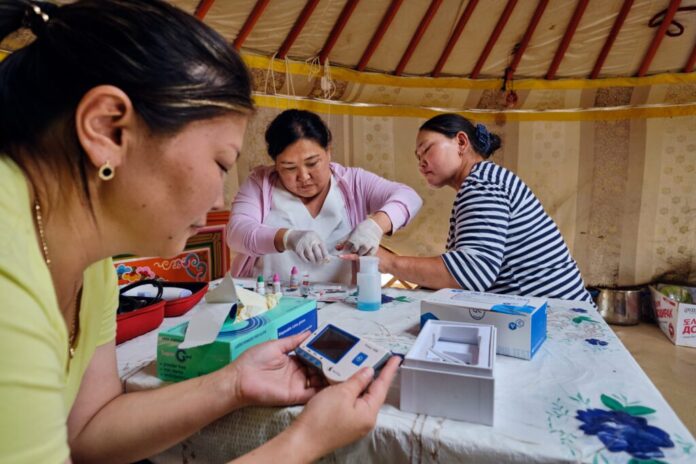The World Health Organization (WHO) has called on governments, healthcare systems, and global partners to urgently ramp up efforts to eliminate viral hepatitis as a public health threat, warning of its silent yet devastating toll on global health. Marking World Hepatitis Day on Monday under the theme “Hepatitis: Let’s Break It Down”, the agency underscored the critical need to simplify, scale up, and integrate hepatitis services worldwide.
The call to action comes as WHO confirmed a major scientific development: Hepatitis D has now been officially classified as carcinogenic to humans by the International Agency for Research on Cancer (IARC). The virus, which only affects individuals already infected with hepatitis B, is now known to increase the risk of liver cancer by two to six times compared to hepatitis B alone.
“Every 30 seconds, someone dies from hepatitis-related liver disease or liver cancer. Yet we have the tools to stop hepatitis,” said WHO Director-General Dr. Tedros Adhanom Ghebreyesus.
Viral hepatitis, particularly types B, C, and D, remains a leading cause of liver cirrhosis and cancer globally. WHO data shows over 300 million people are chronically infected with hepatitis B, C, or D, resulting in more than 1.3 million deaths annually.
Despite the availability of preventive vaccines, effective treatment, and even curative drugs for hepatitis C, the majority of those infected remain unaware of their status. WHO reports that as of 2022, only 13% of people with hepatitis B and 36% with hepatitis C had been diagnosed, with treatment rates standing at a mere 3% for hepatitis B and 20% for hepatitis C—far below the 2025 targets of 60% diagnosed and 50% treated.
The recent IARC reclassification of hepatitis D as a Group 1 carcinogen, alongside hepatitis B and C, is expected to spur new momentum in the global response. “WHO has published updated guidelines on the testing and diagnosis of hepatitis B and D in 2024 and is closely monitoring outcomes from new therapies for hepatitis D,” noted Dr. Meg Doherty, WHO’s incoming Director of Science for Health.
There are positive developments: the number of countries with national hepatitis action plans has more than doubled from 59 in 2020 to 123 in 2025. In the same period, countries adopting hepatitis B testing for pregnant women rose from 106 to 129, and birth-dose hepatitis B vaccinations increased from 138 to 147 nations.
However, major gaps persist in service delivery. Only 80 countries have integrated hepatitis services into primary healthcare, and just 27 nations have incorporated hepatitis C services into harm reduction centres. WHO stresses that achieving its 2030 elimination targets could save 2.8 million lives and prevent 9.8 million new infections—but only if countries increase domestic investments, improve data systems, make medicines affordable, and combat stigma.
In Kenya, the Ministry of Health has intensified its efforts against hepatitis, citing increasing infection rates and low public awareness, particularly in rural areas.
Speaking during World Hepatitis Day commemorations in Mombasa, Director General for Health Dr. Patrick Amoth revealed that approximately 3% of Kenyans are infected with hepatitis B or C, with many cases undiagnosed.
“The government is covering the cost of treatment, meaning patients with hepatitis B or C can now access medication free of charge,” said Dr. Amoth.
He highlighted hepatitis C as particularly prevalent among people who inject drugs, with infection rates reaching up to 25% in some areas, nearly 60% of whom develop chronic infections. Dr. Amoth emphasized community sensitization as a key strategy in increasing early diagnosis and effective management.
To amplify awareness and advocacy, WHO has partnered with Rotary International and the World Hepatitis Alliance for this year’s campaign. Through webinars and grassroots outreach, the collaboration seeks to confront stigma, close funding gaps, and elevate community-driven solutions.
“This campaign is a reminder that the world must act now to expand access, integrate care, and end hepatitis as a public health problem by 2030,” WHO stated.
As the global health community rallies to meet the 2030 elimination targets, WHO warns that time is running out. Without bold, integrated, and well-funded strategies, the world risks losing more lives to a preventable and treatable disease.
Dr. Amoth said the government now provides free treatment for hepatitis B and C emphasing the government’s commitment to eliminating the disease through community sensitisation.
“The government is covering the cost of treatment, meaning patients with Hepatitis B or C can now access medication free of charge,” said Dr. Amoth, noting that this move is expected to boost early diagnosis and effective disease management.
He highlighted that hepatitis C remains prevalent among people who inject drugs, with exposure rates in some regions reaching 25%, nearly 60% of which progress to chronic infections.
To mark World Hepatitis Day, WHO is partnering with Rotary International and the World Hepatitis Alliance to strengthen global and local advocacy.
This year’s campaign “Hepatitis: Let’s break it down” demands action to confront the rising toll of liver cancer linked to chronic hepatitis infections. It also calls for decisive steps to dismantle persistent barriers from stigma to funding gaps that continue to slow progress in prevention, testing, and treatment.
Through a joint webinar and coordinated outreach, the partnership underscores the vital role of civil society and community leadership, alongside governments, in sustaining momentum and accelerating progress toward hepatitis elimination.
Written By Rodney Mbua



















